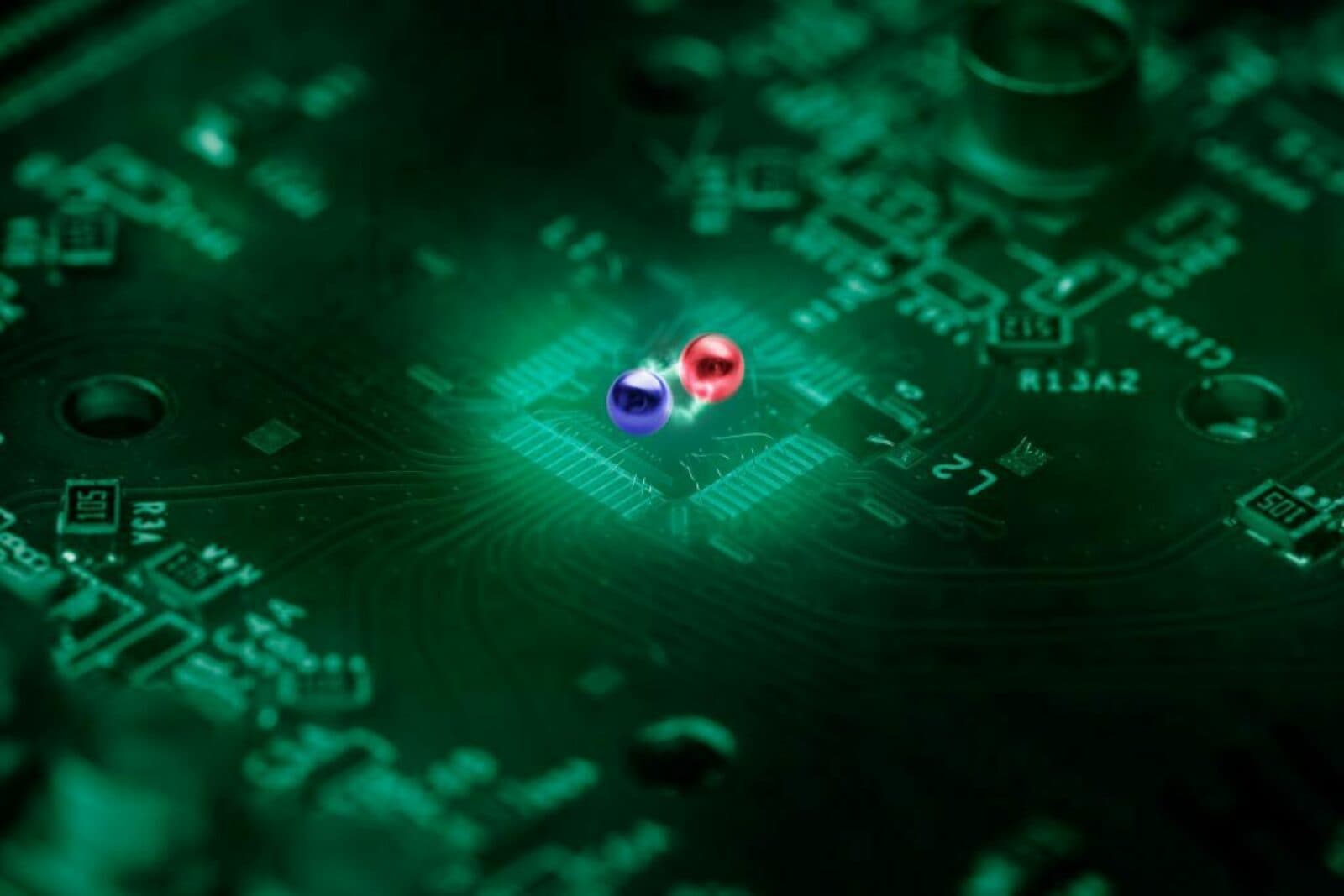The Spin on Quantum
by Alan S. Brown
Research Highlights from Kavli Nanoscience Institutes

The Author
What is the spin on quantum computing research? This month, it involves spin itself. As researchers continue to look for ways to store quantum information, they are investigating everything from superconductors and photons to the spin, or angular momentum, of atomic nuclei and electrons. The big news this month comes from Delft, where researchers have developed a two-bit quantum gate based on electron spins. Ordinarily, such gates have created errors faster than they can correct them. At 99.5 percent fidelity, this new device finally breaks that barrier. Meanwhile, at Caltech, scientists have developed a system that creates spin waves from an entrapped ytterbium ion—and the atoms around it. Also, in the news this month: a chip that may let us automate the cryogenic measurement of proteins, an award for pioneering work in osteoarthritis, and new insights into the molecular mechanisms that control the size of bacteria.
Big jump in quantum gate fidelity
Researchers led by Lieven Vandersypen, a member of the Kavli Institute of Nanoscience at Delft Technical University, and graduate student Xiao Xue have pushed the fidelity of a two-qubit gate to 99.5 percent, significantly better than the 92-98 percent range reported in the past. Their device uses electron spins, which have several advantages in quantum computing: long coherence times, small footprint, and, because production is compatible with advanced semiconductor manufacturing technology, the potential for large-scale production. A key challenge in creating this architecture is that quantum qubits are unreliable. To correct errors faster than they appear, researchers need to push two-qubit gate fidelities above 99 percent. The Kavli team did this by confining a single electron in each of two gate-defined quantum dots made from an isotopically enriched silicon-28/silicon germanium semiconductor. By reducing crosstalk and extending device designs, the researchers believe they can eventually create an integrated, fault-tolerant quantum computer.
Spin in the middle
There will be no quantum networks without quantum storage, but how do we create a system that is robust enough to store qubits? New research from a team led by Andrei Faraon, a member of the Kavli Nanoscience Institute at Caltech, is looking at nuclear spins, the angular momentum of atomic nuclei whose collective oscillations create spin waves that chain together several atoms to store information. Their qubit is built from an ytterbium ion embedded in a transparent crystal of yttrium orthovanadate. By manipulating the ytterbium’s quantum state using a combination of optical and microwave fields, they entangle it with the spin states of multiple vanadium atoms in the crystal.
Microfluidics yields better views of proteins
Cryogenic electron microscopy has become an essential tool for studying large biomolecules like proteins. It freezes proteins in ice to immobilize them so the electron microscope can probe their convoluted geometries. The technique requires artistry, since it is hard to prepare samples with consistent ice thickness and the exposure of the air-water layer damages the molecules. A solution comes from Arjen Jakobi, a member of the Kavli Institute of Nanoscience at Delft Technical University. He has devised a microfluidic device that enables him to freeze picoliter-sized sample volumes within well-defined, electron-transparent channels. This locks out air and creates a uniformly thick sample. If successful, the device would enable researchers to shift to more automated sample preparation and measurement. Jakobi has received a European Research Council Concept Grant to commercialize the process.
Zeroing in on osteoarthritis
Fifteen years ago, Lawrence Bonassar, a professor of biomedical engineering at Cornell University began working with Itai Cohen, a member of the Kavli Institute at Cornell for Nanoscale Science, to understand the nanoscale genesis of osteoarthritis. Now, the Academy of Orthopaedic Surgeons has awarded their team the 2022 Kappa Delta Ann Doner Vaughn Award for their work. The researchers initially looked at articular cartilage, a thin, heterogeneous layer that covers the ends of bones. This is where osteoarthritis begins, and little was known about it. The researchers developed a technique to capture images in milliseconds so they could observe how the layer deforms under impact. They found that it acts as a shock absorber, blunting 90 percent of impact energy. When it fails, it sets off a cascade of changes that alter the composition of the cartilage and eventually lead to osteoarthritis. Building on what they learned, they helped medical companies develop “recipes” for creating cartilage implants. The award’s citation says their work is crucial “in determining the key components and structures in diseased tissues to be targeted for tissue preservation, repair or regeneration.”
What makes cells grow larger?
Scientists have long observed that cells that the faster cells grow, the larger they become. That also know that when the molecular sensor, guanosine-tetraphosphate (ppGpp), drops, it is a signal for bacteria to grow as fast as the environment lets them. But what determines the ultimate size of the bacteria? Greg Bokinsky, a member of the Kavli Institute of Nanoscience at Delft Technical University, and two colleagues, think the answer involves ppGpp as well. They trapped individual bacteria in tiny microchannels, where they could measure them, and changed the levels of ppGpp. When it increased, the bacteria divided to form smaller cells; when it rose, they delayed cell division and grew larger. This is another step forward in unwinding the mechanisms that underlie life on Earth.
